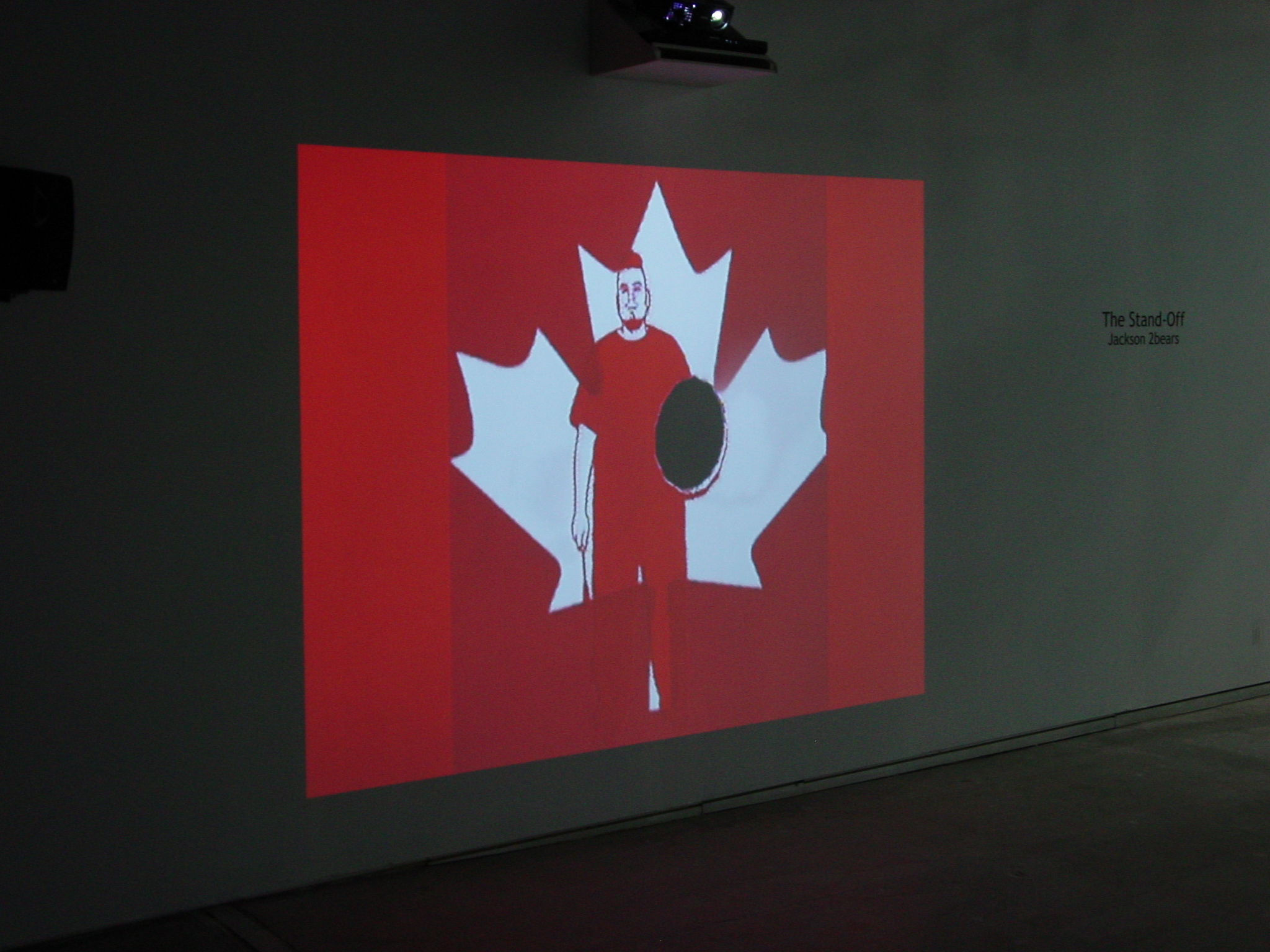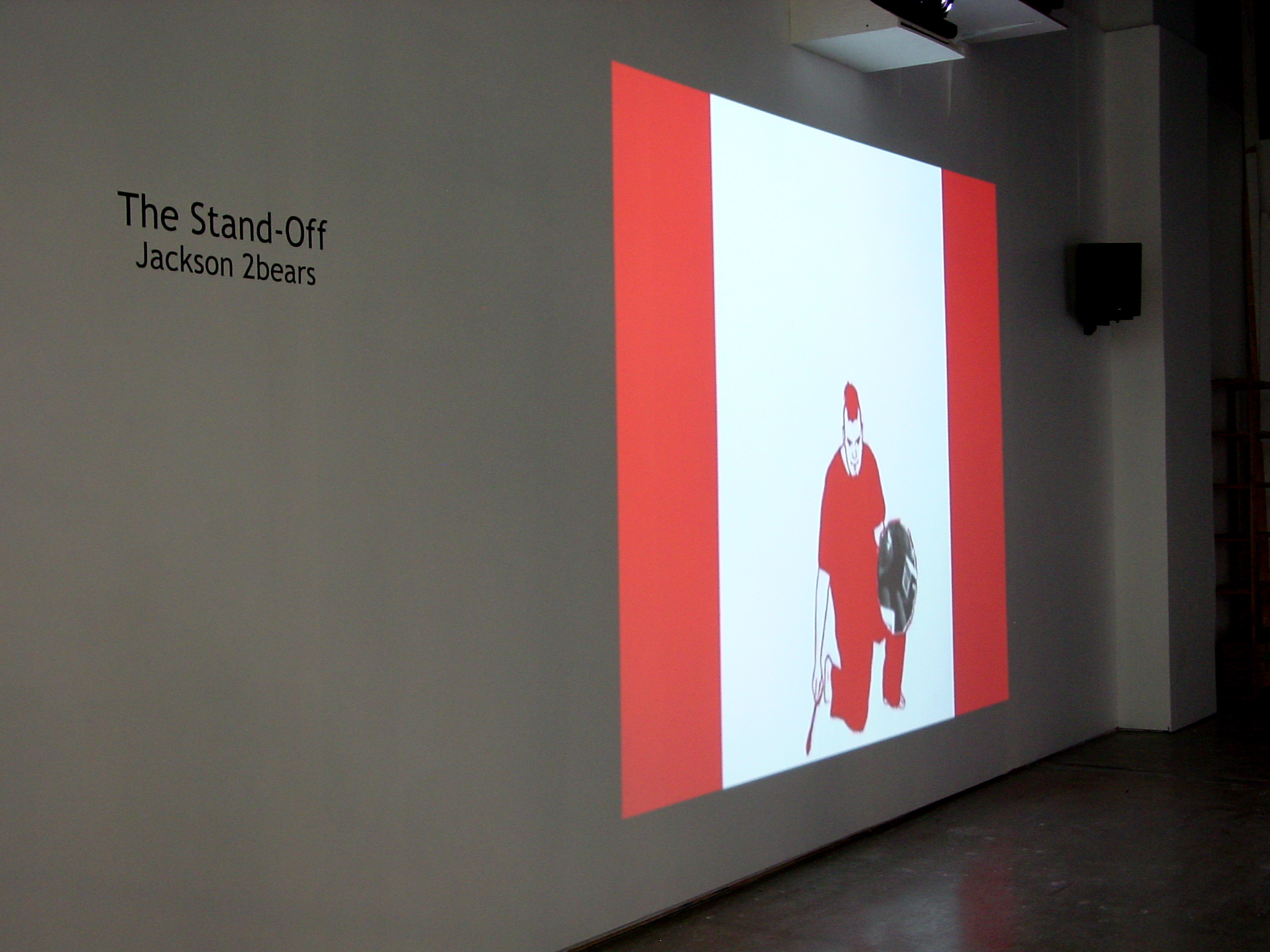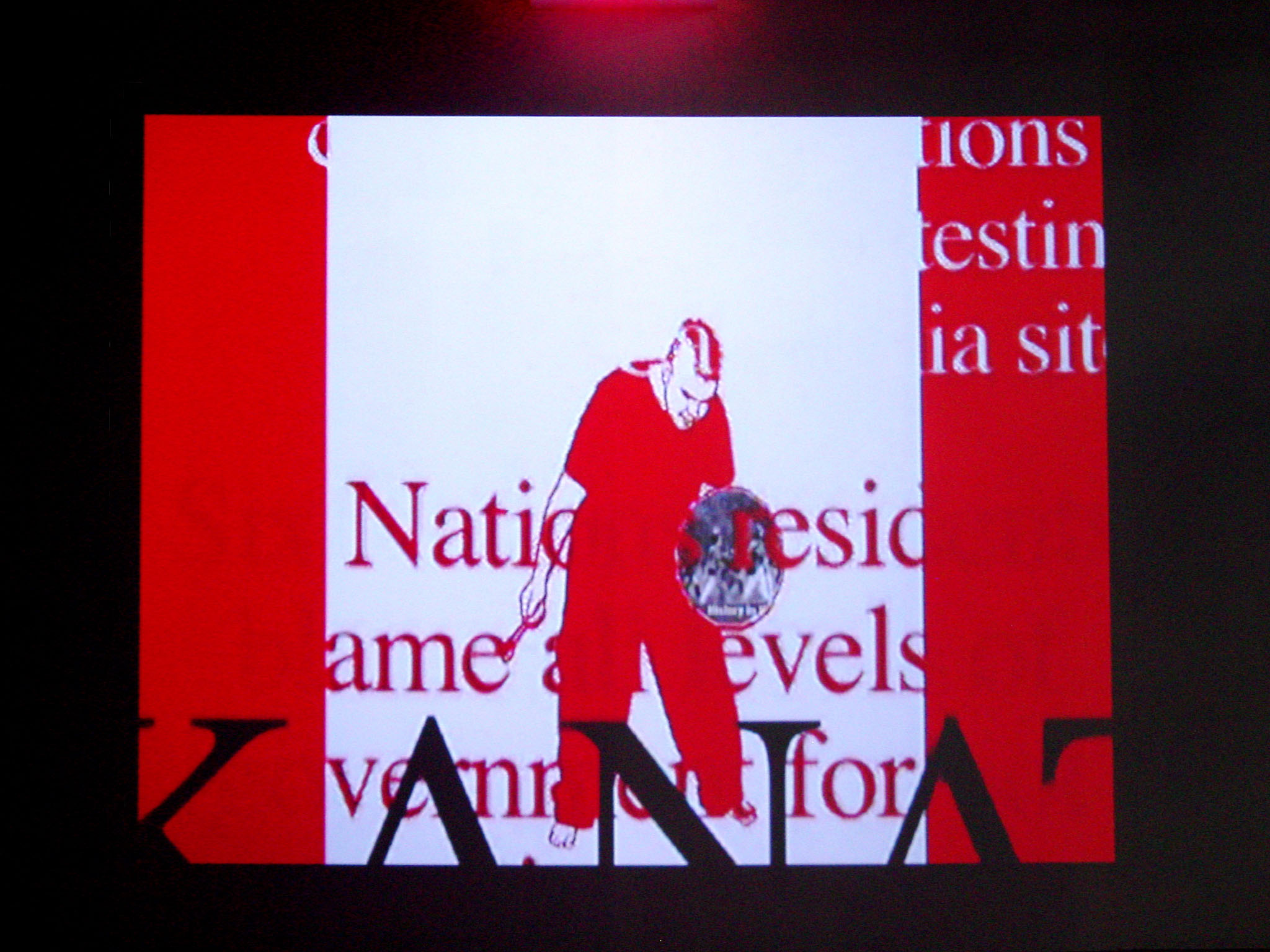
The Stand-Off
Jackson 2Bears
June 27 - August 2, 2008
Jackson 2bears is a Kanien’kehaka (Mohawk) multimedia artist. His work has featured in exhibitions across Canada, and most recently at the Art Gallery of Greater Victoria (Victoria, BC), ImagineNative Film + Media Arts Festival (Toronto, ON), Video In Video Out (Vancouver, BC) and at the Visual Eyez Festival (Edmonton, AB). His work has also been included in media arts festivals and group exhibitions internationally, most recently at Digital Art Weeks (Zürich, Switzerland). He has also released several recordings and performances on DVD, in both solo and collaborative contexts. 2bears is currently a PhD student at the University of Victoria.
Ted Hiebert is a Canadian visual artist and theorist, and a founding member of the Noxious Sector Arts Collective. His artworks have been shown across Canada in public galleries and artist-run centres, and in group exhibitions internationally. Hiebert’s theoretical writings have appeared in The Psychoanalytic Review, Technoetic Arts, Performance Research and CTheory, as well as in numerous catalogs and exhibition monographs. Hiebert is a Post-Doctoral Research Fellow at the Pacific Centre for Technology and Culture at the University of Victoria. He lives in Victoria, BC.






Roland Barthes once invented a country- Japan, he called it - and then proceeded to describe the intricate inner workings of this supposedly fictive nation.[1] While seemingly controversial, Barthes’ point was actually rather - simple - no nation is so uncomplicated that it can be reduced to a singular or official perspective; and Barthes’ “Japan” was also a contrasted attempt to understand the biases and the cultural nuances of his own nation - France - which was no more reducible to intelligible signs than his provocative example.
Following Barthes lead, then, I too shall invent a country, but mine will stay closer to the questions at home. Canada - a nation represented by the coloured codings of the white and the red; the snow blanketed winter ground and the flowing red of the autumn maple, the northern lights or the red-breasted robin. But this goes further too - from red-breasted ro red-neck -- the quickly-complicated codings of colour carry their own ice connotations.
But this is only one version of the white and the red, and not by any means that most challenging. Another, more poignant iteration of these same cades comes to us from Jackson 2bears’ video installation - The Stand-Off - which brings the always charged question of cultural conflict front and centre to the reds and the white of our very flag itself. Here, drawing upon sound and video clips from the Caledonia land dispute, as well as caricatured self-portrait images, 2bears - a Mohawk artist - has created a veritable sit-in of sorts, a piece grown of personal and cultural unrest, and a growing discomfort with the white--noise of solenced political voice. For red is also the colour of blood -- which, as any good hockey fan knows, bounces on the ice, but stains both snow and soil. We also know from art-school colour theory, that red advances towards the viewer - and the historical redcoat advance was no different, proceeding towards the settlement of land and perspective alike.
What then are we to make of this account of nationhood and colour? It is a question without an answer, complicated further by 2bears’ self-portrait placement in the centre of the screen, reclaiming the flag in a gesture of indigenous solidarity, while the remix- mantra “kill the indian” repeats periodically behind him. The voices, angry and divisive; the sounds of his drum, peacefully repetitive, soothing even -- yet make no mistake, this is no soft-style confrontation. This, instead, is no soft-style confrontation. This, instead, is a standoff -- an articulation of personal incommensurability that both binds and divides, and a challenge to us all to consider the manifold other ways in which actions - both political and personal - impact those with which we share both shame and pride.
And the result of this standoff, then, like that of Barthes story itself, is to precisely multiply these possible ways of representing both country and self, a stampede of interpreted truths and histories. And the question that lingers, having seen a representation of 2bears’ Canada, is precisely the question of our own vision -- which Canada do I live in, which Canada do you live in, and -- in the end -- are our own versions not too always partial in the perspectives they foster or deny? It is, in the end, impossible to reduce such signs to a singular static identity -- national or otherwise. Instead, this is a piece which can only make us think - the answers themselves must be lived.
-Ted Hiebert
Notes:
[1] Roland Barthes. Empire of SIgns. Richard Howard, trans. (New York: Hill & Wand, 1982)
